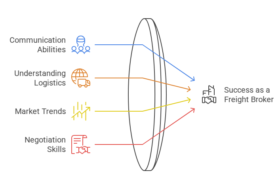For many years, Western Star Trucks played last fiddle in truck sales symphonies, with U.S. Class 8 market share numbers of 1% and less. The company’s share climbed a bit when it was bought by Freightliner in 2000. Since sibling Sterling Truck fell by the wayside in 2008, parent company Daimler Trucks North America has been able to provide more technical and marketing support. As the economy recovers and sales of commercial vehicles revive, ‘Star executives are widening their product range to try to capture more business.
The latest result is the 4700, a Baby 8 that follows an established mode: Put a midrange engine in a Class 8 chassis so it can be sold for somewhat less than a full-on heavy-duty model. The 4700’s base engine is the Cummins ISC8.3, available until Cummins drops it at the end of this year, with the heavy-duty midrange ISL9 as an option. The new model becomes a serious grownup with a Detroit DD13 and higher gross weight ratings. Thus, there’s a blurry line between the 4700 and its big brothers, the 4800 and 4900, except that they can be had with 15-liter power.
Star production
Our test vehicle, a 4700 tractor, is a recently announced variant. Execs unveiled the 4700 as a straight truck at the Work Truck Show in Indianapolis in March of 2011. Production didn’t start until December, which explains why Western Star marketing people kept putting off my requests to drive one. The opportunity finally came at a ride-and-drive event at the Las Vegas Speedway in early May.
All Western Stars, including the big, off-road 6900EX, are built at Daimler Trucks North America’s plant in Portland, Ore., to exacting standards. They are the only heavy truck models I know of that are assembled completely right-side-up, starting with the frame rails; all others begin upside down. The idea, which came from Canadians who ran the original Western Star plant in Kelowna, British Columbia, is that workers are more likely to assemble everything correctly if they can properly see the trucks from the very start.
‘Stars do seem to be properly bolted together, as indicated by good behavior of the vehicles I drove on and off pavement in one corner of the massive speedway complex. There were about a dozen trucks at three stations, and we were encouraged to drive as many as we could.
I sampled probably half the available trucks, but for this article, I zeroed in on this stark-white regional and short-haul tractor. It shared a lot of details with the vocationally oriented straight trucks, including a strong steel cab – no sleepers will be available, execs said – and a sloped and sculpted fiberglass hood unique to all 4700s.
Engine questions
Unlike the trucks, most of which had the Cummins ISL with modest power and torque settings, this tractor had the Detroit DD13, with a healthy rating of 470 horsepower and 1,650 pounds-feet, the company representative told me as I climbed into the cab. I pushed in the yellow and red parking brake valves, engaged 2nd gear in the Fuller 10-speed, and eased out the clutch. I was puzzled when it grabbed abruptly and we began rolling. I thought the engine felt a little weak, as the tractor seemed to drag the heavily loaded trailer into motion. A glance in the mirror told me it was because the trailer’s tires really were dragging. “Oh, heh heh,” I said with a reddening face, and pushed again at the red valve to release those brakes, and acceleration livened up a little.
However, the engine still seemed somewhat sluggish. “It doesn’t feel like a 470,” I remarked. Later I saw from a specifications list that the horsepower rating was actually 450, but still with the strong torque. Throughout the drive. It didn’t accelerate or climb grades as I’d expected, even with our high gross combination weight of 75,000 to 80,000 pounds. Maybe we were heavier than that.
On the road
There were no scales and no worries on the nearby streets and highways. I took a few corners, upshifting at 1,500 rpm or so and downshifting when necessary, and I noted that the gear pattern was short and tight and all notches easy to find. I headed north on Interstate 15 and almost immediately encountered a 3% to 4% upgrade. There was a lane restriction and a line of orange construction barrels. Even after the hill eased to 1% or 2% I couldn’t accelerate beyond 55 mph or so. Yet that’s not bad with a heavy load.
Downhill, of course, the ‘Star’s Detroit had no trouble getting us to the legal 75 mph, and I was impressed by the quietness of the interior. Only when cracking open my window did I hear wind noise, which seemed to come from the mirror brackets a couple of feet away. Under all conditions, the engine remained quiet and smooth. It may even have been too quiet, because there was little sensation of power except what the speedometer said.
Sharp eyes might note that a 4700’s cab looks like those on bigger models. It is the exact same one, something our hosts emphasized. It’s made of steel that’s galvanealed, a process where the zinc coating is attached through dipping, as with galvanizing, then heat-treated so it chemically bonds with the steel. This makes it more resistant to corrosion from aggressive road salts and less likely to be chipped off by flying rocks and such. That’s among the truck’s premium details, executives point out.
In the cab
The cab is roomy, with enough space across for three-person seating, though most trucks will have just two seats, and some will have just one for the driver. The cab was tight and rattle-free, and its doors slammed shut with a solid thunk.
A well-placed exterior grab handle makes for a safe climb, and a pocket in the door can be grasped for steadying. Just outside, the driver’s steps are well-spaced and securely mounted over the tanks for fuel and diesel exhaust fluid.
The instrument panel is also the same as on other ‘Stars. There’s a full range of gauges to keep the driver informed, plus an info display to alert the driver if something has gone wrong that he or she might not have noticed. The gauges’ traditional styling made them appear oblivious to all the electronic complexity that we know is behind the dashboard. As in other ‘Stars, the gauges are a little small in diameter – an oddity on a big truck – but legible enough. The tractor was satisfying to drive and is something I’d be happy to be assigned to if I were a real-life driver.
A 4700 mixer
The same goes for the 4700 vocational trucks I drove earlier. One was a metallic red mixer chassis with the ISL mated to an Eaton automated mechanical tranny, which upshifted at moderate engine speeds, 1,500 and 1,600 rpm, instead of near the rev limiter as with previous UltraShifts I’ve driven.
I headed out onto the track, bouncing over ruts and bounding over a hill graded into the infield as a demo obstacle. Other trucks were also roaming the area, all of us sending fog-like dust billowing into the air and coating our machines with grime. It was rather work-site-like, in other words.
Through it all, the red ‘Star proved itself a sprightly performer, even though I wished there were some crushed rock or even water in the barrel to give it some realistic loaded weight. However, it was an effective test of its suspensions and ride quality, which was rather good. Add in the other features it shares with the tractor and the 4700 trucks seem a good choice for anyone wanting serious quality to handle tough jobs.







